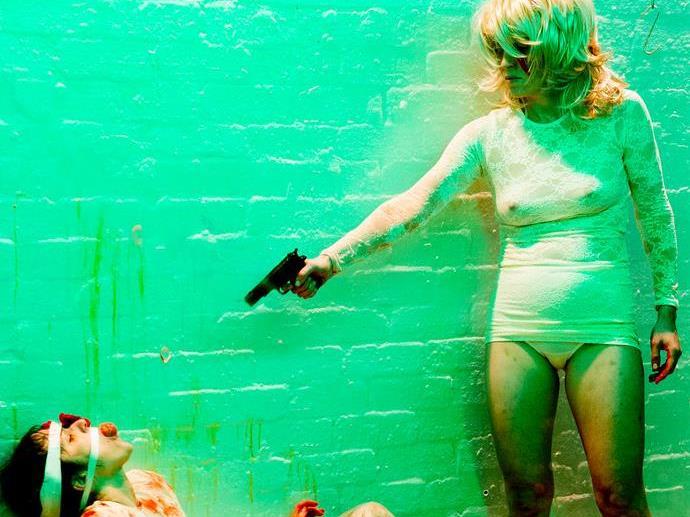Image by Brett Boardman.
Western perspectives of identity are largely shaped by the story of Cain and Abel, which establishes oversimplified dichotomies such as good vs evil, loyalty vs betrayal, murderer vs victim. But what if the first act of violence was committed by a woman? The Rabble explore this question in their experimental work Cain and Abel.
The task of examining feminine identities within a masculine allegory is problematic at best. Western society constructs female identities in terms of artifice (clothes, make-up), or in terms of their roles in relation to others (the mother, the wife). Rarely are women portrayed as autonomous entities themselves. The female identity in western society is such a construct that in trying to strip away the artifice to reveal an implied true female identity, we are instead left with nothing. In this vacuum, audiences are compelled to interpret this nothing as Everyman – a generic, and by default, generically male, character. And hence, the result is completely antithetical to the goal.
Does this paradox make your head feel like it’s going to explode? If so, good. Because that’s about as visceral as it’s going to get in this production.
The Rabble’s Cain and Abel is an intellectualised exploration of this theme, and though I believe this to be a deliberate decision, it is also its downfall. Part of the power of experimental theatre is to elicit a primal or instinctual gut reaction, which was sadly lacking. I watched Cain kill Abel over and over again, in different ways, for different reasons, a murder which should have been shocking in its detachment, but in effect, was simply detached. An additional problem was the painfully loud audio which had half the audience blocking their ears instead of listening to the evocative sound design.
For an experimental work though, it is as tightly crafted as you’re going to get. The set design is clever in its versatility – a perspex pyramid instantly partitions the space, creating an inside and an outside, a make-believe space vs a real-world space. In line with the play’s themes of duality, it is the perfect canvas on which power dichotomies can be re-written.
The most valuable insight occurs during the domestic violence scene, where Abel invents lie after lie to disguise her abuse. Here we see women as compliant in the violence inflicted against them. How can women be blameless if they protect their abusers? Yet, compare this to the original (male) Abel, who, rendered blameless by death, has become a symbol for the righteousness of man. In this scene of the play, we see how differently our discourse might have been shaped if Cain and Abel had been sisters – here we see the story put into a feminine context. This produces an alternative to other scenes, such as the knight scene, where story and character remain firmly masculine, with the only difference being that the performers are women in drag.
Overall, despite being a pretty polished piece, it feels conceptually underdeveloped, as if it entered the production phase prematurely. It’s also pretty esoteric and will likely alienate audiences without a background in feminist theory.
When you set yourself up for impossible tasks, you will almost certainly fail, but if you achieve even just a few minor wins, even within the context of the greater failure, that is commendable. This is what the Rabble have done here, so I commend their bravery, and hope that their failures here inspire them to set sights on even more impossible goals, because theatre needs its misfits, and the Rabble do a fine job of that.
Rating: 2 ½ out of 5 stars
Cain and Abel
Belovoir and The Rabble
Created by Kate Davis & Emma Valente
Director: Emma Valente
Set & Costume Designer: Kate Davis
Lighting & Sound Designer: Emma Valente
Stage Manager: Mel Dyer
Directing Secondment: Rachel Roberts
Design Secondments: Nick Fry, Tyler Hawkins
Observer: James Jackson
Cast: Dana Miltins, Mary Helen Sassman
Belvoir, Downstairs Theatre, Belvoir St, Surrey Hills
www.belvoir.com.au
15 May – 8 June






